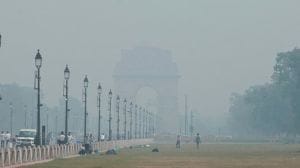Hope floats: Monsoon delay not to hit crops
Even as farmers wait for the monsoons to arrive, agriculture scientists say that the seven-day delay, as forecast by the Indian Meteorologic...

Even as farmers wait for the monsoons to arrive, agriculture scientists say that the seven-day delay, as forecast by the Indian Meteorological Department, will not have much of an impact on crops.
The monsoons were expected to hit the Andaman Sea by May 20. Latest reports say the rains arrived today, but it will be 10-12 days more before it hits the mainland.
Dr L S Rathore, an agriculture meteorologist at the Medium Range Forecasting Centre of the IMD, said: ‘‘The late arrival of the monsoon will have no negative impact, because kharif crop-sowing operations can absorb this delay. We have a cushion period of a fortnight. Also, a delay in the onset of rains over Kerala does not mean there will be a similar delay elsewhere.’’
The Indian Council for Agriculture Research has got a contingency plan in place should there be a major delay in the arrival of the rains.
‘‘We are watching the situation. Till date, there is nothing to get alarmed about. But we have contingency plans: If the rains are delayed, we will promote alternative crops. For instance, we’ll recommend early maturing crops if the monsoons are inordinately delayed, or medium-duration crops if there is a short lag,’’ said Mangala Rai, director-general of the Indian Council for Agriculture Research.
But experts warned that the post-arrival movement of the monsoon will also be critical.
‘‘We are concerned about not just when the monsoons set in, but also about how it continues. If there is a break after the onset, we have to react accordingly. Basically, we have to keep an eye on its progress,’’ said Dr Rai.
Rice, cotton, millet and oilseeds are the main winter crops. While cotton is sowed before the onset of the monsoons, the others are sown in June-July and harvested in October-November. The failure of the monsoons last year had led to the kharif crop production falling below normal.
According to D S Pai, director of the long-range forecasting division at IMD’s National Climate Centre (which tracks the monsoons and provides predictions), the monsoons were expected in the Andamans any time now. ‘‘Once it arrives, it will be easy to monitor its progress. And it may move fast,’’ he said.
The IMD had predicted that the monsoon would hit Kerala seven days after the normal date of arrival, which is June 1. However, the Centre of Mathematical Modelling and Computer Simulation, a CSIR body, has forecast that the rains will be 12 per cent below normal in July.
Photos



- 01
- 02
- 03
- 04
- 05




























